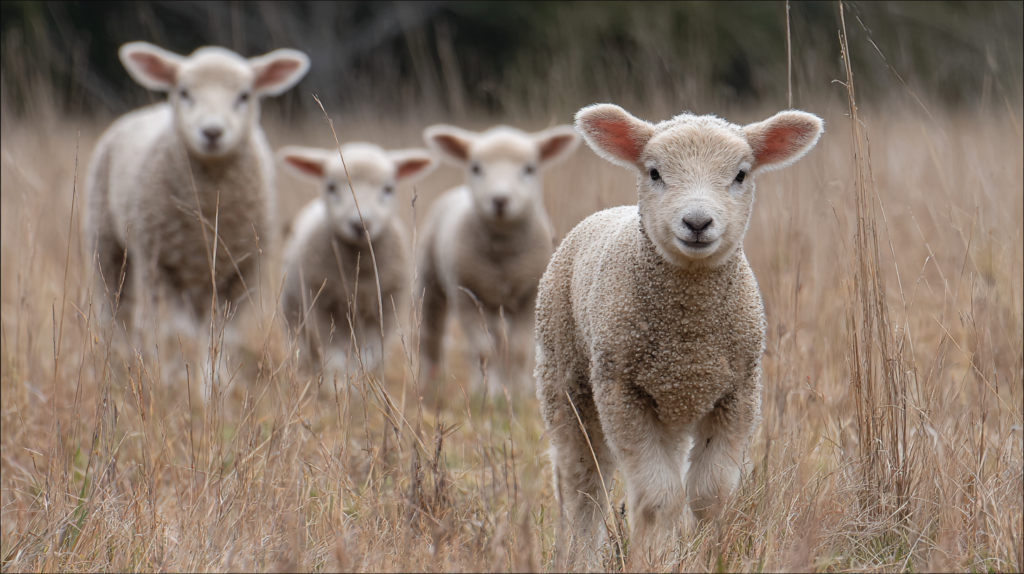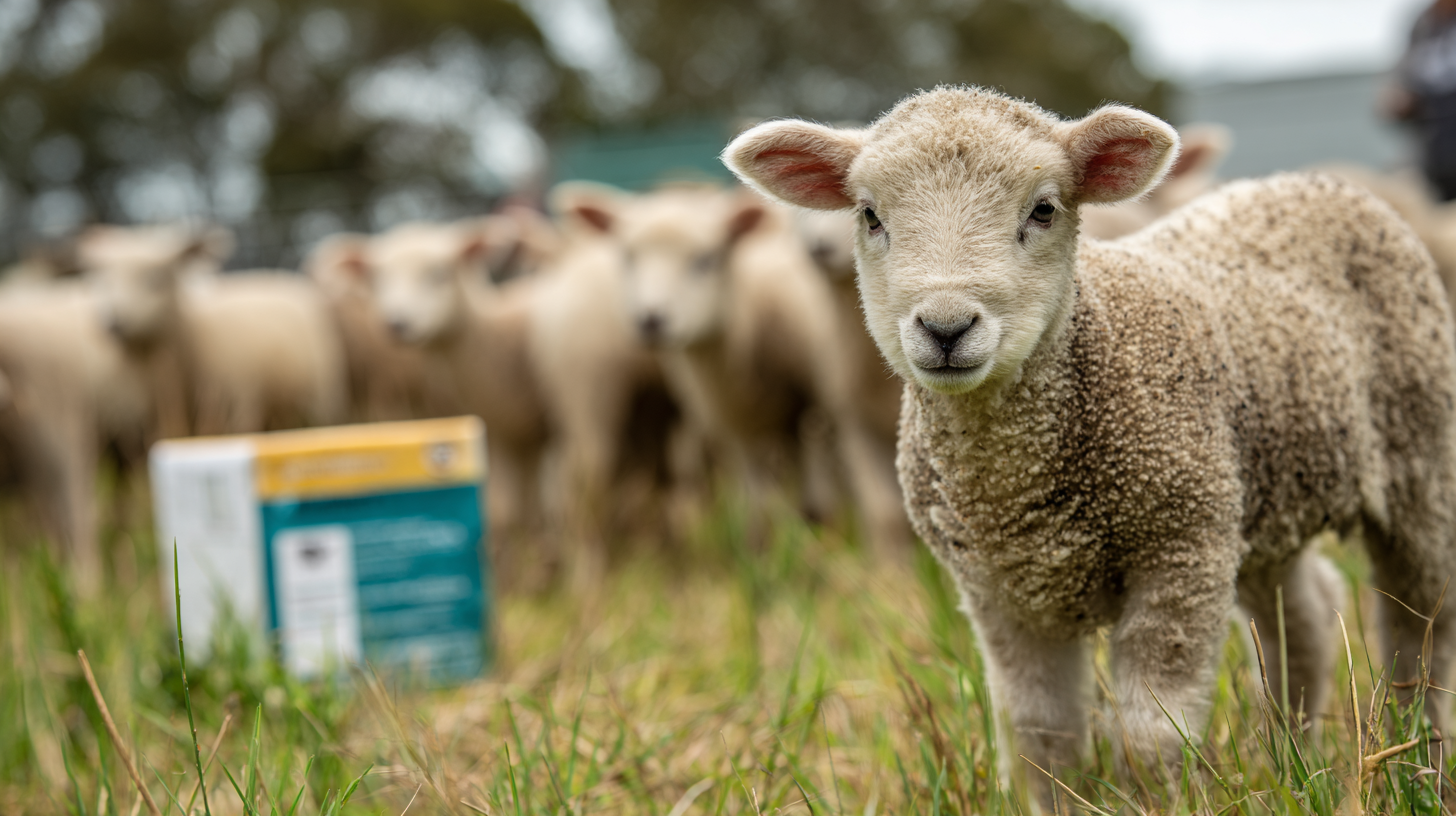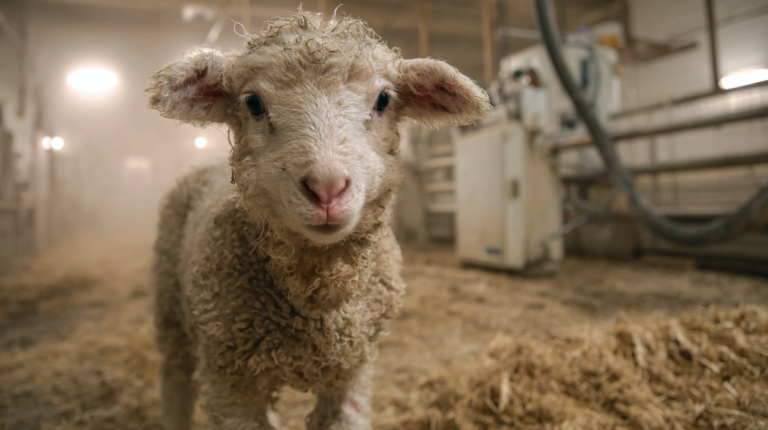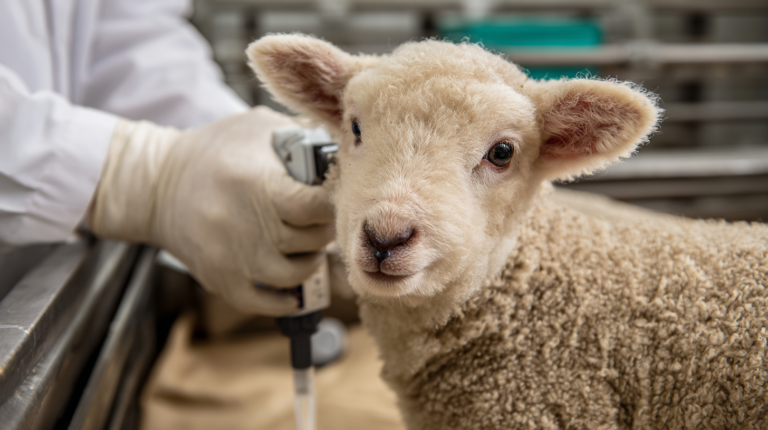Discover proven strategies to prevent intestinal parasites in lambs. Learn symptoms, treatment options, and expert prevention tips for healthy livestock management.
Table of Contents
When Sarah first noticed her prized lamb showing signs of lethargy and poor appetite, she had no idea that intestinal parasites in lambs would become her most challenging farm management issue. Like many livestock owners, she learned the hard way that these microscopic invaders can devastate young flocks if left unchecked. Intestinal parasites in lambs represent one of the most significant health threats facing sheep producers worldwide, causing billions of dollars in economic losses annually through reduced growth rates, decreased wool production, and increased mortality rates.

The reality is sobering: nearly every lamb will encounter intestinal parasites at some point during their development. However, with proper knowledge and proactive management strategies, these parasitic infections can be effectively prevented and controlled. This comprehensive guide will equip you with the essential knowledge and practical tools needed to protect your lambs from these persistent threats while maintaining healthy, productive flocks.
Understanding Intestinal Parasites in Lambs: The Hidden Enemy
| Parasite Type | Scientific Name | Severity Level | Primary Symptoms | Affected Age Group |
|---|---|---|---|---|
| Haemonchus (Barber Pole Worm) | Haemonchus contortus | High | Anemia, pale mucous membranes, weakness | All ages, especially young lambs |
| Trichostrongylus | Trichostrongylus spp. | Medium | Diarrhea, poor growth, dehydration | Weaned lambs and adults |
| Teladorsagia | Teladorsagia circumcincta | Medium | Reduced appetite, weight loss, diarrhea | Young lambs primarily |
| Cooperia | Cooperia curticei | Low-Medium | Mild diarrhea, reduced feed efficiency | All ages |
| Coccidia | Eimeria spp. | High | Bloody diarrhea, dehydration, mortality | Young lambs (3-8 weeks) |
| Strongyloides | Strongyloides papillosus | Medium | Diarrhea, poor growth, skin irritation | Newborn to 6 weeks |
Intestinal parasites in lambs encompass a diverse group of organisms that have evolved specifically to exploit the digestive systems of young sheep. These parasites include various species of roundworms, tapeworms, and coccidia, each presenting unique challenges for livestock managers. According to the American Veterinary Medical Association, parasitic infections affect over 90% of sheep flocks globally, with young lambs being particularly vulnerable due to their developing immune systems.
The most common intestinal parasites affecting lambs include Haemonchus contortus (barber pole worm), Teladorsagia circumcincta (brown stomach worm), Trichostrongylus species, and various coccidia species. These parasites follow complex life cycles that typically involve environmental stages and internal development within the host animal. Understanding these life cycles is crucial for developing effective prevention strategies.
Dr. Jennifer Martinez, a veterinary parasitologist at the University of California Davis, explains: “The challenge with intestinal parasites in lambs is that by the time clinical symptoms become apparent, significant damage has already occurred. Early intervention and prevention are absolutely critical for maintaining flock health and productivity.”
The economic impact of parasitic infections extends beyond immediate treatment costs. Research published in the Journal of Veterinary Parasitology indicates that subclinical parasitic infections can reduce lamb growth rates by 15-30%, significantly impacting profitability for producers. Additionally, heavily parasitized lambs often require extended treatment periods and may never fully recover their growth potential.
Environmental factors play a crucial role in parasite transmission. Warm, humid conditions create ideal environments for parasite egg development and larval survival. Overcrowded pastures, poor drainage, and inadequate sanitation practices all contribute to increased parasite loads in grazing areas. Understanding these environmental influences is essential for implementing effective prevention strategies.
Recognizing the Warning Signs: Early Detection Saves Lives
Early detection of intestinal parasites in lambs can mean the difference between successful treatment and devastating losses. Unfortunately, many parasitic infections remain subclinical until significant damage has occurred. However, observant livestock managers can identify subtle warning signs that indicate parasitic infections before they become life-threatening.
The FAMACHA eye score system, developed by South African researchers, provides a practical tool for assessing anemia levels in sheep and goats. This system evaluates the color of the inner eyelid, with pale coloration indicating anemia often caused by blood-sucking parasites like Haemonchus contortus. Regular FAMACHA scoring allows producers to identify heavily parasitized animals before clinical symptoms become severe.
Physical symptoms of parasitic infections in lambs include diarrhea, weight loss, poor coat condition, and reduced appetite. However, these signs often appear gradually and may be mistaken for other health issues. More specific indicators include bottle jaw (submandibular edema), which typically occurs in advanced cases of barber pole worm infection, and the presence of coccidia-related bloody diarrhea in young lambs.
Behavioral changes often precede obvious physical symptoms. Parasitized lambs may show reduced activity levels, reluctance to move with the flock, or decreased interest in nursing. These subtle behavioral modifications can be easily overlooked but represent important early warning signs for attentive caretakers.
Regular fecal egg counts provide the most accurate method for detecting parasitic infections before clinical symptoms appear. Veterinary laboratories can perform these tests quickly and cost-effectively, allowing producers to make informed treatment decisions. The sheep and goat industry recommends conducting fecal egg counts at least quarterly, with more frequent testing during high-risk periods.
Body condition scoring represents another valuable tool for monitoring flock health. Parasitized lambs typically show gradual declines in body condition that may not be immediately apparent through casual observation. Implementing regular body condition scoring protocols helps identify animals requiring closer examination and potential treatment.
The Science Behind Parasite Life Cycles: Breaking the Chain
| Strategy | Prevention Method | Effectiveness | Implementation | Key Benefits |
|---|---|---|---|---|
| 1 Pasture Management | Strategic rotation and rest periods, multi-species grazing | Very High | Moderate | Breaks parasite life cycles, reduces contamination |
| 2 Nutritional Support | Optimal protein levels, mineral supplementation, immune boosters | High | Easy | Strengthens natural immunity, improves resistance |
| 3 Selective Treatment | FAMACHA scoring, fecal egg counts, targeted deworming | Very High | Moderate | Preserves drug efficacy, reduces resistance |
| 4 Breeding Programs | Select for parasite-resistant genetics, performance testing | High | Complex | Long-term genetic improvement, reduced treatments |
| 5 Environmental Management | Clean water systems, dry bedding, facility sanitation | Medium-High | Easy | Reduces parasite exposure, improves overall health |
| 6 Monitoring Systems | Regular fecal testing, body condition scoring, record keeping | High | Moderate | Early detection, informed treatment decisions |
Understanding parasite life cycles is fundamental to developing effective prevention strategies for intestinal parasites in lambs. Most gastrointestinal parasites follow similar patterns involving environmental and internal development stages. Adult parasites residing in the lamb’s digestive system produce eggs that are passed in feces and contaminate pasture environments.
Environmental conditions significantly influence parasite development. Optimal temperatures between 68-86°F (20-30°C) and adequate moisture levels allow parasite eggs to develop into infective larvae within 1-3 weeks. These larvae climb onto grass blades where they remain viable for several weeks, waiting for susceptible hosts to consume them during grazing.
The prepatent period, the time between infection and egg production, varies among parasite species but typically ranges from 2-4 weeks. During this period, young parasites develop within the host while causing internal damage that may not be immediately apparent. Understanding these timelines helps producers anticipate infection patterns and implement targeted prevention measures.
Seasonal parasite dynamics play a crucial role in infection patterns. Spring and fall typically represent peak transmission periods due to favorable environmental conditions. However, climate change and regional variations can alter these traditional patterns, requiring adaptive management approaches.
Parasite development also depends on host factors including age, nutritional status, and immune function. Young lambs possess immature immune systems that provide limited protection against parasitic infections. Additionally, stress factors such as weaning, transportation, and dietary changes can compromise immune function and increase susceptibility to parasitic infections.
The concept of hypobiosis, or developmental arrest, adds complexity to parasite management. Some parasite species can enter dormant states within the host and resume development when conditions become favorable. This phenomenon explains why animals may show sudden increases in parasite loads during periods of stress or environmental change.
Six Powerful Prevention Strategies for Intestinal Parasites in Lambs
1. Strategic Pasture Management and Rotation
Effective pasture management represents the cornerstone of parasite prevention in lamb production systems. Strategic grazing practices can significantly reduce parasite exposure while maintaining productive grassland ecosystems. The key principle involves breaking parasite life cycles through strategic pasture rotation and environmental manipulation.
Rotational grazing systems should incorporate rest periods of at least 90 days between sheep grazing cycles. This duration allows most parasite larvae to die from environmental exposure and lack of suitable hosts. Research conducted at the University of Georgia demonstrated that properly implemented rotational grazing systems can reduce parasite loads by up to 70% compared to continuous grazing practices.
Multi-species grazing represents an innovative approach that capitalizes on the host-specific nature of many parasites. Cattle, horses, and sheep harbor different parasite species, allowing mixed grazing systems to naturally reduce parasite populations. Cattle can graze areas previously used by sheep, consuming sheep-specific parasite larvae that cannot complete their life cycles in cattle hosts.
Pasture topography and drainage significantly influence parasite survival. Low-lying, poorly drained areas provide ideal conditions for parasite development and should be avoided during high-risk periods. Installing proper drainage systems and avoiding overgrazing in sensitive areas can dramatically reduce parasite pressure.
The concept of “clean” pastures involves utilizing areas that have been recently cultivated, cut for hay, or grazed by non-susceptible species. These areas typically contain minimal parasite populations and provide safe grazing opportunities for young lambs. Maintaining detailed records of pasture use history enables producers to identify and utilize clean pastures effectively.
2. Nutritional Optimization and Immune Support
Proper nutrition plays a fundamental role in parasite resistance and overall flock health. Well-nourished lambs develop stronger immune systems that provide better protection against parasitic infections. Nutritional deficiencies, particularly protein and mineral deficiencies, can significantly compromise immune function and increase susceptibility to parasites.
High-quality protein sources are essential for immune system development and parasite resistance. Research published in the Journal of Animal Science indicates that lambs receiving adequate protein levels show improved resistance to Haemonchus contortus infections compared to protein-deficient animals. Recommended protein levels for growing lambs range from 14-18% of dry matter intake, depending on age and production stage.
Mineral supplementation, particularly copper, zinc, and selenium, supports immune function and parasite resistance. These trace minerals serve as cofactors in various immune processes and antioxidant systems. However, copper supplementation requires careful management due to potential toxicity issues in sheep. Working with a qualified nutritionist ensures proper mineral balance and supplementation protocols.
Tannin-containing plants offer natural parasite control benefits. Certain forages like sericea lespedeza, chicory, and birdsfoot trefoil contain condensed tannins that interfere with parasite development and reproduction. Incorporating these plants into grazing systems provides both nutritional benefits and natural parasite control.
Strategic supplementation during high-risk periods can enhance immune function when lambs are most vulnerable. Providing additional protein and energy during weaning, breeding, and lambing seasons supports immune system function during stressful periods. This approach has shown particular effectiveness in reducing coccidiosis outbreaks in young lambs.
3. Implementing Targeted Selective Treatment Protocols
Targeted selective treatment (TST) represents a paradigm shift from routine blanket deworming to selective treatment based on individual animal needs. This approach helps preserve drug efficacy while reducing selection pressure for anthelmintic resistance. TST protocols require careful monitoring and assessment but provide sustainable long-term parasite control.
The FAMACHA system provides a practical tool for implementing TST protocols. Regular assessment of individual animals allows producers to identify those requiring immediate treatment while leaving others untreated. This approach maintains a population of susceptible parasites that compete with resistant strains, slowing resistance development.
Fecal egg count monitoring supports TST decision-making by providing quantitative data on parasite loads. Animals with high egg counts (typically >500 eggs per gram) require immediate treatment, while those with lower counts may not need intervention. This approach requires investment in laboratory testing but provides more precise treatment decisions.
Body condition scoring complements other TST tools by identifying animals with declining health status. Lambs showing poor body condition despite adequate nutrition may harbor significant parasite loads requiring treatment. Combining multiple assessment methods provides a comprehensive picture of individual animal health status.
Treatment thresholds should be established based on local conditions, parasite species, and production goals. Working with veterinary professionals helps develop appropriate protocols for specific operations. These thresholds may need adjustment based on seasonal conditions, animal age, and production stage.
4. Strategic Breeding for Parasite Resistance
Genetic selection for parasite resistance offers a sustainable long-term approach to reducing parasitic infections in sheep flocks. Natural variation in parasite resistance exists within sheep populations, and selective breeding can enhance these characteristics over time. This approach requires patience and careful record-keeping but provides lasting benefits.
Estimated breeding values (EBVs) for parasite resistance are now available for many sheep breeds. These values are based on fecal egg count data and provide objective measures of genetic merit for parasite resistance. Incorporating EBVs into breeding decisions gradually improves flock-wide resistance to parasitic infections.
Maternal effects play an important role in lamb parasite resistance. Ewes with strong parasite resistance often produce lambs with enhanced resistance characteristics. Additionally, ewes with good immune function provide better passive immunity through colostrum and milk, protecting young lambs during their most vulnerable period.
Heterosis, or hybrid vigor, can improve parasite resistance in crossbred animals. Strategic crossbreeding programs that utilize breeds with different resistance characteristics can produce offspring with enhanced overall health and parasite resistance. However, crossbreeding programs require careful planning to maintain desirable production traits.
Performance testing of breeding stock under parasite challenge conditions helps identify superior animals. Natural challenge tests or controlled parasite infections can reveal animals with exceptional resistance characteristics. These animals become valuable breeding stock for improving flock-wide resistance.
5. Environmental Management and Facility Design
Proper facility design and environmental management create conditions that discourage parasite development and transmission. Well-designed facilities reduce stress on animals while minimizing exposure to parasite-contaminated environments. These physical improvements provide long-term benefits for parasite control.
Drainage systems are crucial for reducing parasite survival in facility environments. Standing water and muddy conditions provide ideal breeding grounds for various parasite species. Installing proper drainage, maintaining gutters, and ensuring adequate slope in animal areas significantly reduces parasite pressure.
Ventilation systems in enclosed facilities help maintain appropriate environmental conditions while reducing stress on animals. Good air circulation prevents excessive humidity that favors parasite development. Proper ventilation also reduces respiratory stress that can compromise immune function.
Flooring materials and design influence parasite exposure and transmission. Slatted flooring or raised platforms reduce contact with contaminated feces while improving sanitation. These systems require higher initial investment but provide long-term benefits for animal health and parasite control.
Quarantine facilities allow for proper isolation and evaluation of new animals before introduction to existing flocks. New additions may harbor different parasite strains or species that could compromise established control programs. Proper quarantine protocols include fecal examination and appropriate treatment before mixing with resident animals.
6. Integrated Monitoring and Record-Keeping Systems
Comprehensive monitoring and record-keeping systems provide the foundation for effective parasite management programs. Detailed records enable producers to identify trends, evaluate treatment effectiveness, and make informed management decisions. Modern technology offers tools that simplify data collection and analysis.
Fecal egg count records provide quantitative data on parasite loads and treatment effectiveness. Regular monitoring helps identify problematic areas, assess treatment success, and adjust management strategies. Electronic record-keeping systems can track individual animal data and generate reports for analysis.
Treatment records document drug usage, dosages, and effectiveness. This information helps identify potential resistance problems and guides future treatment decisions. Proper record-keeping also supports regulatory compliance and drug withdrawal period management.
Body condition scoring data tracked over time reveals trends in flock health and parasite impact. Declining body condition scores may indicate increasing parasite pressure or reduced feed quality. This information helps guide nutritional and management decisions.
Pasture management records track grazing history, rest periods, and parasite levels in different areas. This information helps optimize rotation schedules and identify problematic fields. GPS technology can create detailed maps showing parasite distribution across farming operations.
Advanced Treatment Options and Emerging Technologies
| Age Period | Primary Risk Factors | Diagnostic Methods | Treatment Approach | Monitoring Frequency |
|---|---|---|---|---|
| Birth – 2 weeks | Maternal transmission, colostrum quality, environmental contamination | Visual assessment Body condition | Preventive care Clean environment, quality colostrum |
Daily observation |
| 2 – 6 weeks | Coccidia exposure, stress, crowding, wet conditions | Fecal examination Clinical signs | Immediate treatment Coccidiostats, supportive care |
Every 3-5 days |
| 6 – 12 weeks | Weaning stress, pasture exposure, immune development | FAMACHA scoring Fecal egg count | Selective treatment Based on individual assessment |
Weekly checks |
| 3 – 6 months | Peak susceptibility period, pasture contamination buildup | Fecal egg count Body weight FAMACHA | Targeted therapy Strategic deworming protocols |
Bi-weekly monitoring |
| 6 – 12 months | Developing immunity, seasonal variation, breeding stress | Routine fecal testing Performance tracking | Risk-based treatment Focus on high-risk individuals |
Monthly assessment |
| Adult (1+ years) | Pregnancy stress, lactation demands, seasonal peaks | Annual screening Performance monitoring | Maintenance protocol Strategic pre-breeding/lambing treatment |
Quarterly evaluation |
The landscape of parasite control in livestock continues to evolve with new treatment options and technological advances. While prevention remains the preferred approach, understanding available treatment options ensures producers can respond effectively when parasitic infections occur.
Combination anthelmintic products offer improved efficacy against resistant parasite populations. These products contain multiple active ingredients that work through different mechanisms, reducing the likelihood of treatment failure. However, combination products require careful use to avoid accelerating resistance development.
Biological control agents represent an emerging area of parasite management. Nematophagous fungi and other biological organisms can reduce parasite populations in pasture environments. While still in development, these approaches offer promising sustainable control options for the future.
Immunological approaches, including vaccination development, show promise for certain parasite species. Research continues on vaccines for major sheep parasites, though commercial products remain limited. These approaches could provide long-term protection with reduced reliance on chemical treatments.
Precision agriculture technologies enable more targeted parasite management approaches. GPS-guided systems can map parasite distribution across farming operations, allowing for site-specific management strategies. This technology helps optimize resource allocation and improve treatment effectiveness.
Creating a Comprehensive Parasite Management Plan
Developing an effective parasite management plan requires integration of multiple strategies tailored to specific farm conditions and production goals. Successful programs combine prevention, monitoring, and treatment approaches while remaining flexible enough to adapt to changing conditions.
Risk assessment forms the foundation of any parasite management plan. Identifying high-risk periods, vulnerable animal groups, and problematic areas allows for targeted intervention strategies. Climate patterns, pasture conditions, and flock demographics all influence risk levels throughout the year.
Standard operating procedures ensure consistent implementation of management practices. Written protocols for monitoring, treatment decisions, and record-keeping help maintain program effectiveness even when personnel changes occur. Regular training updates keep staff current on best practices and new developments.
Contingency planning prepares operations for parasite outbreaks or treatment failures. Having alternative treatment options, emergency protocols, and veterinary contacts readily available ensures rapid response to unexpected situations. These plans should be reviewed and updated regularly based on experience and changing conditions.
Economic analysis helps justify investments in parasite control measures. Calculating the costs of prevention programs versus treatment expenses and production losses provides valuable information for decision-making. This analysis often reveals that comprehensive prevention programs provide excellent returns on investment.
Frequently Asked Questions
Get expert answers to the most common questions about preventing and treating intestinal parasites in lambs
How often should I deworm my lambs?
What’s the most effective deworming medication for lambs?
Can I use natural remedies instead of chemical dewormers?
How do I know if my lambs have coccidia?
What’s the best age to start parasite prevention in lambs?
How long do parasite eggs survive in the environment?
No matching questions found
Try adjusting your search terms or browse all questions above
The Economic Impact of Effective Parasite Control
Understanding the economic implications of parasite management helps justify investments in prevention programs and guides decision-making processes. Research consistently demonstrates that comprehensive parasite control programs generate positive returns through improved animal performance and reduced treatment costs.
Production losses from parasitic infections extend beyond obvious mortality. Subclinical infections reduce growth rates, delay breeding, and decrease wool production. Studies indicate that effective parasite control can improve daily weight gains by 20-40% in young lambs, directly impacting profitability.
Treatment costs include not only medication expenses but also labor, facilities, and veterinary services. Preventive programs often require lower overall investment than reactive treatment approaches. Additionally, preventing severe infections reduces the need for expensive emergency treatments and extended care periods.
Market impacts of parasite control include improved carcass quality, reduced condemnation rates, and better product consistency. Well-managed flocks produce more uniform products that command premium prices in discriminating markets. This quality advantage becomes increasingly important as consumer awareness of animal welfare grows.
Long-term sustainability depends on maintaining effective parasite control while preserving treatment options for future use. Resistance management strategies require short-term investments but protect long-term viability of livestock operations. This perspective emphasizes the importance of integrated management approaches over quick fixes.
For more expert pet care tips and product recommendations, visit https://BlithePet.com — your trusted source for pet wellness.
Conclusion
Intestinal parasites in lambs represent a persistent challenge that requires comprehensive, science-based management approaches. The six powerful prevention strategies outlined in this guide provide a framework for protecting young lambs while maintaining productive, profitable operations. Success depends on understanding parasite biology, implementing multiple prevention strategies, and maintaining vigilant monitoring programs.
The evolution toward targeted selective treatment and integrated management represents a significant advancement in parasite control. These approaches require greater knowledge and attention but provide sustainable solutions that preserve treatment options for future generations. By combining traditional management wisdom with modern scientific understanding, producers can effectively control parasitic infections while maintaining animal welfare and economic viability.
Remember that effective parasite management is an ongoing process requiring adaptation to changing conditions and new information. Working closely with veterinary professionals, staying current with research developments, and maintaining detailed records will help ensure long-term success in controlling intestinal parasites in lambs.
The investment in comprehensive parasite management programs pays dividends through improved animal health, enhanced productivity, and reduced treatment costs. As the livestock industry continues to evolve, those operations that master integrated parasite management will enjoy competitive advantages in increasingly demanding markets.
Have a similar experience with your pet? Share it in the comments below!





